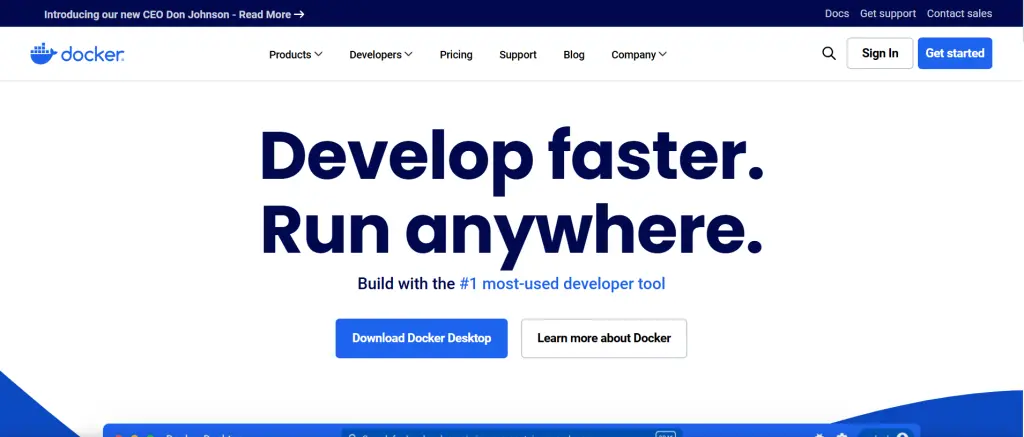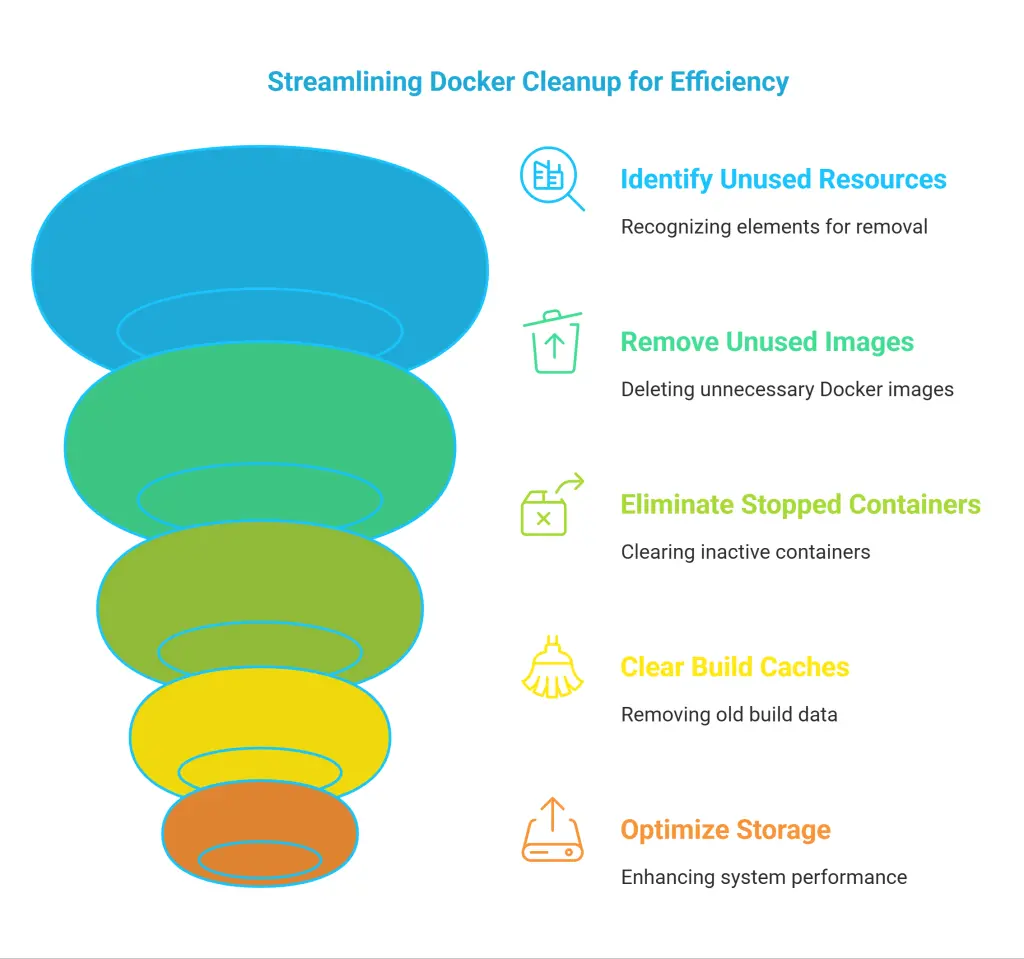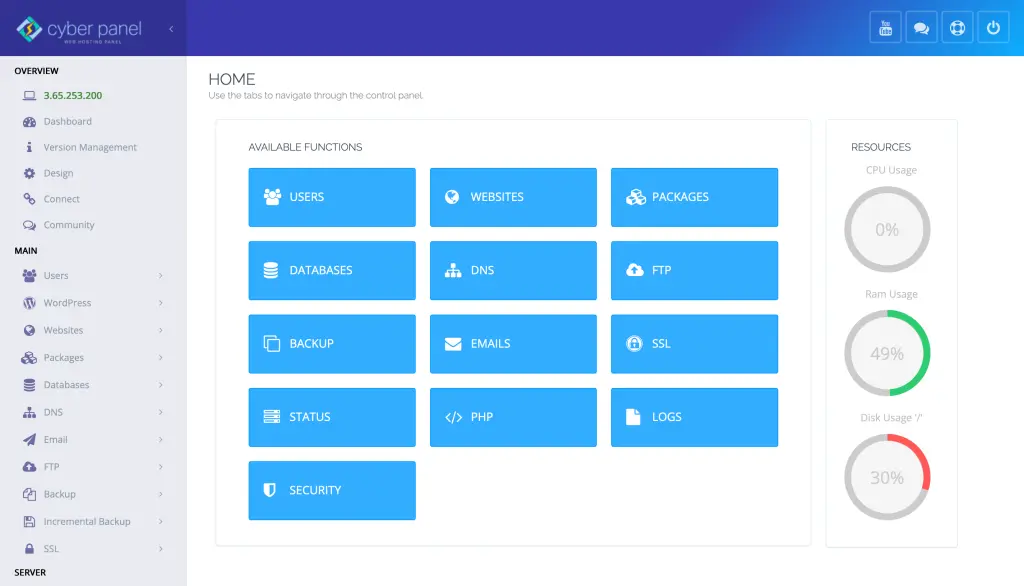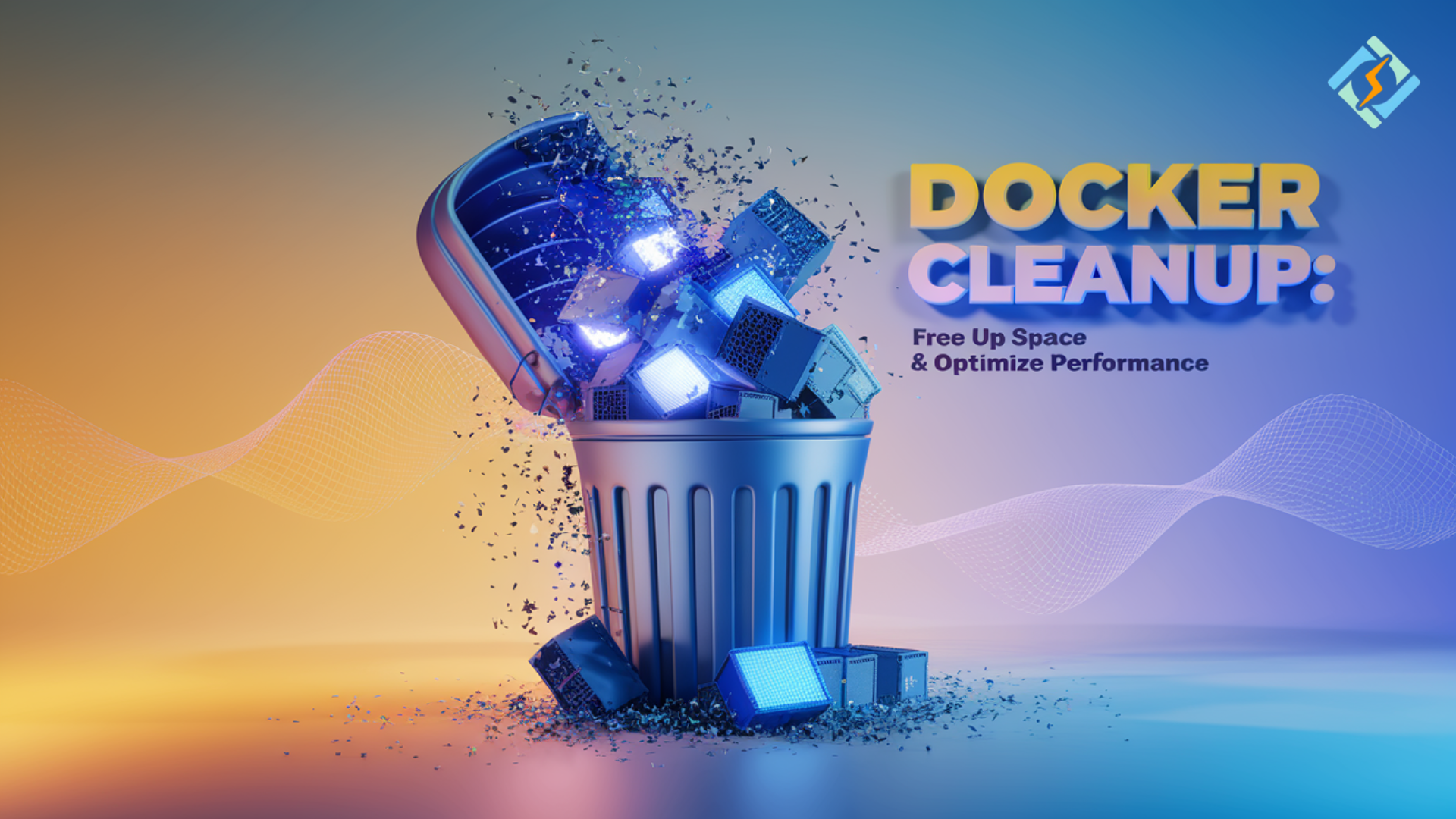Work on a system over time, and you have systems full of Docker images, containers, and caches that take up disk space and degrade performance. Docker is a strong containerization stage with reserved container pictures and compartment volumes to expand performance and programming construction line. Still, Docker doesn’t erase unused components, which may prompt over-the-top stockpiling uses and dial actions back. We are going to learn Docker cleanup.
Docker has built-in tools to automatically clean up unused images, containers, volumes, and caches. Clutter-cleaning operations can free up storage space and optimize performance by understanding and executing these cleaning operations. In this article, we learn several Docker cleanup techniques, from removing dangling images, clearing caches to overlay2 removal. Furthermore, you can also learn how manageable containerized applications work under the supervision of the Cyber Panel.
Understanding Docker Cleanup

Docker will not automatically free up space by removing unused images, stopped containers, or old volumes. These components get collected over time, which affects storage and system efficiency. Regular cleanup involves:
- Delete any Unused (Dangling) images
- Deleting stopped containers
- Clearing Docker build caches
- Manages the overlay2 storage driver
Here’s how we can implement these operations efficiently.
Docker Cleanup Images
Unused docker images can take a substantial amount of disk space. The commands below will help you identify and remove them.
Get exclusive access to all things tech-savvy, and be the first to receive
the latest updates directly in your inbox.
Remove Dangling Images
docker images -f dangling=true
docker rmi $(docker images | grep "" | awk "{print $3}")Output:
Deleted: sha256:abc123...
Deleted: sha256:def456...Remove All Unused Images
docker image prune -aHow To Clear Out Stopped Containers
Containers that are stopped stay in the system until deleted. List them using the following command and delete them using:
List Stopped Containers
docker ps -a -f status=exitedRemove Stopped Containers
docker rm $(docker ps -aq -f status=exited)Docker Cleanup Cache
Docker caching layers from earlier builds can build up and take storage.
Remove Build Cache
docker builder pruneDocker Overlay2 Cleanup

The overlay2 storage driver docker uses on Linux by default can collect quite a bit of data. To free up space:
sudo rm -rf /var/lib/docker/overlay2/*
Role of CyberPanel in Docker

CyberPanel is a web hosting control panel that uses OpenLiteSpeed. CyberPanel has made Docker management easy. With CyberPanel, you can:
- Manage and deploy Docker containers
- Monitor resource usage & storage
- Scheduled scripts for automatic cleanup tasks
Quick actions for Docker containers are simplified with CyberPanel with no effort in manual management.
FAQs
1. How often should I clean up Docker?
It depends on usage. High-frequency deployments need weekly cleanup, whereas lower usage could require monthly maintenance.
2. What will happen if I delete all docker images?
Remove all images, and you remove all the stored versions of your containers. No containers will run using those images.
3. How do I automate the Docker cleanup?
Yes, you can automate it by creating a cron job that executes cleanup commands at regular intervals.
Final Thoughts!
Finally, cleaning up Docker is crucial for maintaining system efficiency and performance. This performance improvement is accomplished by removing unused images, containers, and caches, preventing unnecessary resource consumption.
Get hands-on with your Docker environment today! Apply these cleanup measures and use CyberPanel to manage your containerized applications efficiently.



